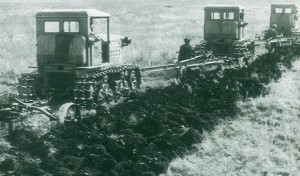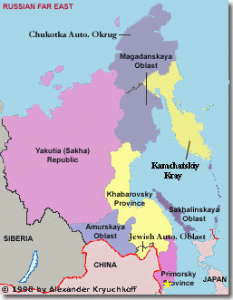 The economic and historical ignorance of the Russian authorities’ yet another populist initiative to hand out land-one hectare per person-free of charge for a five-year period is astonishing.
The economic and historical ignorance of the Russian authorities’ yet another populist initiative to hand out land-one hectare per person-free of charge for a five-year period is astonishing.
It is assumed that happy landowners will be using their land plots situated at least 10 to 20 kilometers away from any major residential communities mainly for farming purposes at their own expense since there is no expectations of government subsidies for land development. There is simply no money for that in the Russian budget. Kremlin also seems to be forgetting that even with the use of expensive modern technologies and fertilizers the biggest part of Russia’s Far East is unsuitable for commercial agriculture due to its harsh northern climate. Not to mention the lack of roads, schools, hospitals and a very sparse population of the Kolyma and Chukotka regions.
The idea of handing out land plots free of charge in Russia’s Far East was publicly voiced by Presidential Envoy to the region Yuri Trutnev during his meeting with president Putin in January 2015. The latter liked this idea and endorsed a corresponding draft bill which will soon be introduced to the State Duma. Although land giveaways are scheduled to begin in May 2016, applications can supposedly be submitted even now.
60 years ago, the Communist Party of the Soviet Union launched a Virgin Lands Campaign to promote agricultural development of Northern Kazakhstan. In addition to sending there tens of thousands of young “builders of Communism,” the ruling party invested enormous public resources into the campaign. From 1954 to 1961, the project swallowed 20 percent of the USSR’s investments in agriculture which resulted in an inadequate funding of the same sector in other parts of the country. Wrong assessment of climate conditions and misallocation of resources led to a crisis. After a few rather successful years, yield crops in the virgin lands began rapidly decreasing to the point where even the seed fund could not be harvested anymore. As a result, the virgin lands remained mostly uncultivated, and the Soviet Union had to purchase wheat abroad because it could not produce enough grain at  home.
home.
There is another, more recent example demonstrating the lack of prospects of the new project of developing Russia’s Far East. According to the results of the state’s repatriation program, simplifying the process for former compatriots to move back to Russia, from 2006 to 2012, only 13.5 percent of those expected actually returned to the country.
Moreover, while the program was being implemented over the period of five years from 2006 to 2011, only about 400 families moved to Russia’s Far Eastern regions. In 2011, the westernmost part of Russia, Kaliningrad region, located on the territory of former East Prussia between Lithuania and Poland, was ranked as the most attractive Russian region, whereas the Primorsk region was named one of the least attractive repatriation destinations.
However, it is also worth mentioning that since Kaliningrad became part of the USSR after World War II and all German farmers were evicted from the region, its agricultural sector has not been in its best shape. It is also significant that the new land giveaway initiative restricts foreigners from applying for land allocation because the Russian Far East is as concerned about a Chinese invasion as Kaliningrad fears the return of Germans. Indeed, let them pay war reparations instead.





